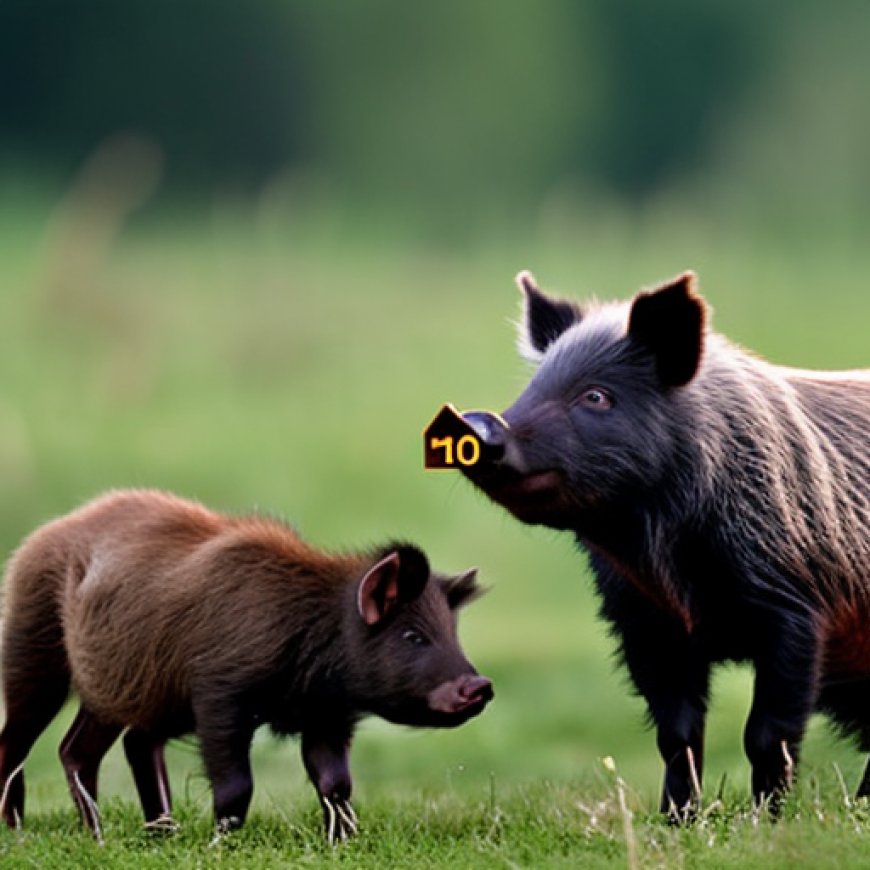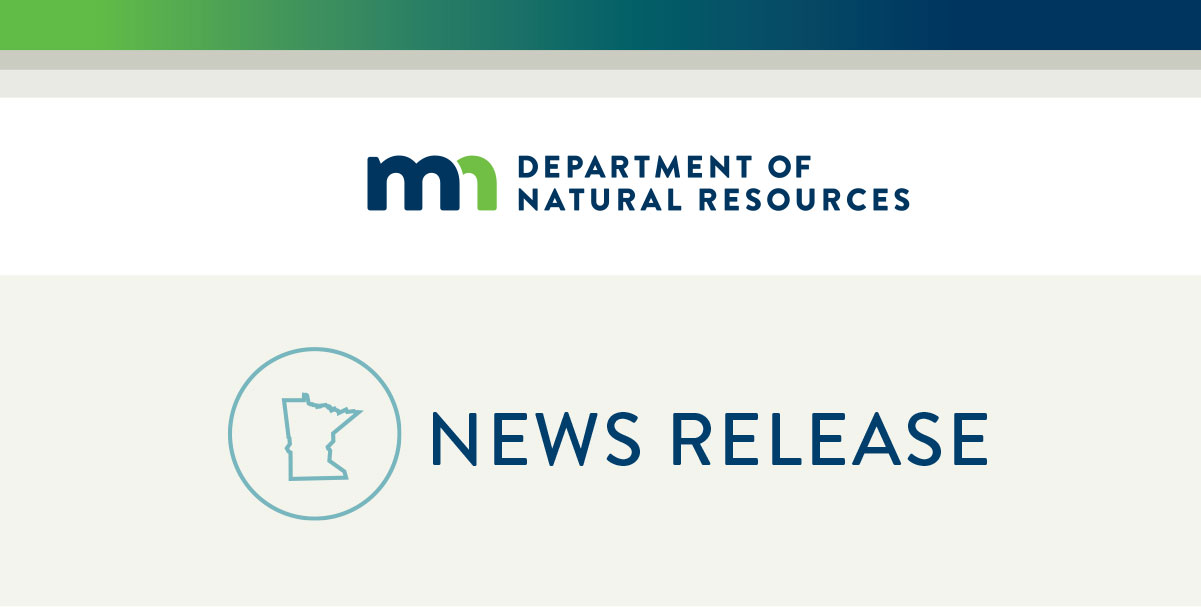DNR to host meeting on future risks of feral pigs and released mink : Nov 7, 2023 | News release
DNR to host meeting on future risks of feral pigs and released mink ... MN DNR



Public invited to share feedback on proactive review of agency roles and policy
Several Minnesota state agencies are reviewing how to prevent negative impacts on the environment and human health from feral pigs and farmed mink let loose in the wild.
This is an opportunity to proactively identify any gaps in our management,” said Leslie McInenly, wildlife populations and regulations manager with the Minnesota Department of Natural Resources. A team of subject matter experts from multiple state agencies has been meeting this fall to conduct this review.
Sustainable Development Goals (SDGs)
- Goal 3: Good Health and Well-being
- Goal 14: Life Below Water
- Goal 15: Life on Land
The Minnesota DNR, in cooperation with the Board of Animal Health, Department of Agriculture, and Department of Health, is asking people to share their perspectives in an online questionnaire. Additionally, the Minnesota DNR will host an online public meeting from 6:30-8 p.m. on Tuesday, Nov. 14 that will include a brief overview of agency roles and responsibilities, a discussion of potential changes in state management, and an opportunity for participants to offer input. Registration will not be required. The questionnaire and meeting information can be found on the Minnesota DNR website.
Sustainable Development Goals (SDGs)
- Goal 3: Good Health and Well-being
- Goal 14: Life Below Water
- Goal 15: Life on Land
The state’s review will be presented to the Minnesota State Legislature in February 2024. In response to recent reports of feral pigs near the U.S.-Canada border, and mink-related disease outbreaks and releases of farmed mink in other states and countries, the 2023 Legislature directed the agencies to review current legal authorities and responsibilities, identify any need to clarify or modify responsibilities for feral pig and mink management, and develop policy recommendations to further prevent negative impacts on the environment and human health.
This review is an opportunity to ensure the state of Minnesota has the necessary policies and structures in place to respond to any environmental, animal health or public health concerns related to feral pigs or mink,” McInenly said. State agencies have a history of collaboration with each other on these sorts of topics, as well as collaboration with partners such as the United States Department of Agriculture.
Feral pigs, which can result from intentional introductions of wild boar species or escapes of domestic animals, are a recognized concern for natural resource managers and the agricultural community due to substantial impacts they can have on ecosystems, native species, and agricultural crops. Although Minnesota does not have an established population, feral pigs have been reported in most states and populations have been expanding in recent decades.
Mink farms and released mink recently garnered attention due to the animals’ susceptibility to diseases that can also impact humans, such as SARS-CoV-2 and influenza viruses. Mink farming has declined over the decades in Minnesota and is currently practiced on a very limited scale.
In addition to the online comment that is open through Tuesday, Nov. 28, and the Nov. 14 meeting opportunity, written comments may also be submitted through Nov. 28, by emailing [email protected] or sending mail to Feral Swine and Mink Report, Minnesota DNR Division of Fish and Wildlife, 500 Lafayette Road, St. Paul, MN 55082.
Public invited to share feedback on proactive review of agency roles and policy
Several Minnesota state agencies are reviewing how to prevent negative impacts on the environment and human health from feral pigs and farmed mink let loose in the wild.
“This is an opportunity to proactively identify any gaps in our management,” said Leslie McInenly, wildlife populations and regulations manager with the Minnesota Department of Natural Resources. “A team of subject matter experts from multiple state agencies has been meeting this fall to conduct this review.”
The Minnesota DNR, in cooperation with the Board of Animal Health, Department of Agriculture, and Department of Health, is asking people to share their perspectives in an online questionnaire. Additionally, the Minnesota DNR will host an online public meeting from 6:30-8 p.m. on Tuesday, Nov. 14 that will include a brief overview of agency roles and responsibilities, a discussion of potential changes in state management, and an opportunity for participants to offer input. Registration will not be required. The questionnaire and meeting information can be found on the Minnesota DNR website.
The state’s review will be presented to the Minnesota State Legislature in February 2024. In response to recent reports of feral pigs near the U.S.-Canada border, and mink-related disease outbreaks and releases of farmed mink in other states and countries, the 2023 Legislature directed the agencies to review current legal authorities and responsibilities, identify any need to clarify or modify responsibilities for feral pig and mink management, and develop policy recommendations to further prevent negative impacts on the environment and human health.
“This review is an opportunity to ensure the state of Minnesota has the necessary policies and structures in place to respond to any environmental, animal health or public health concerns related to feral pigs or mink,” McInenly said. “State agencies have a history of collaboration with each other on these sorts of topics, as well as collaboration with partners such as the United States Department of Agriculture.”
Feral pigs, which can result from intentional introductions of wild boar species or escapes of domestic animals, are a recognized concern for natural resource managers and the agricultural community due to substantial impacts they can have on ecosystems, native species, and agricultural crops. Although Minnesota does not have an established population, feral pigs have been reported in most states and populations have been expanding in recent decades.
Mink farms and released mink recently garnered attention due to the animals’ susceptibility to diseases that can also impact humans, such as SARS-CoV-2 and influenza viruses. Mink farming has declined over the decades in Minnesota and is currently practiced on a very limited scale.
In addition to the online comment that is open through Tuesday, Nov. 28, and the Nov. 14 meeting opportunity, written comments may also be submitted through Nov. 28, by emailing [email protected] or sending mail to Feral Swine and Mink Report, Minnesota DNR Division of Fish and Wildlife, 500 Lafayette Road, St. Paul, MN 55082.
Analysis:
1. Which SDGs are addressed or connected to the issues highlighted in the article?
- SDG 15: Life on Land
- SDG 3: Good Health and Well-being
The article discusses the review being conducted by Minnesota state agencies to prevent negative impacts on the environment and human health from feral pigs and farmed mink. This connects to SDG 15, which focuses on protecting, restoring, and promoting sustainable use of terrestrial ecosystems, and SDG 3, which aims to ensure healthy lives and promote well-being for all at all ages.
2. What specific targets under those SDGs can be identified based on the article’s content?
- Target 15.5: Take urgent and significant action to reduce the degradation of natural habitats, halt the loss of biodiversity, and protect and prevent the extinction of threatened species.
- Target 3.3: By 2030, end the epidemics of AIDS, tuberculosis, malaria, and neglected tropical diseases and combat hepatitis, water-borne diseases, and other communicable diseases.
The article highlights the need to prevent negative impacts on the environment and human health caused by feral pigs and farmed mink. Target 15.5 specifically addresses the need to protect and prevent the extinction of threatened species, which includes addressing the impact of feral pigs on native species and ecosystems. Target 3.3 focuses on combating communicable diseases, such as those that can be transmitted by mink.
3. Are there any indicators mentioned or implied in the article that can be used to measure progress towards the identified targets?
Yes, the article mentions the following indicators:
- Reports of feral pigs near the U.S.-Canada border
- Mink-related disease outbreaks and releases of farmed mink in other states and countries
- Decline in mink farming over the decades in Minnesota
These indicators can be used to measure progress towards the identified targets. Reports of feral pigs and disease outbreaks in mink populations can indicate the effectiveness of measures taken to reduce the negative impacts on ecosystems and human health. The decline in mink farming in Minnesota can also be seen as progress towards preventing disease transmission from farmed mink to humans.
4. Table: SDGs, Targets, and Indicators
| SDGs | Targets | Indicators |
|---|---|---|
| SDG 15: Life on Land | Target 15.5: Take urgent and significant action to reduce the degradation of natural habitats, halt the loss of biodiversity, and protect and prevent the extinction of threatened species. | – Reports of feral pigs near the U.S.-Canada border – Decline in mink farming over the decades in Minnesota |
| SDG 3: Good Health and Well-being | Target 3.3: By 2030, end the epidemics of AIDS, tuberculosis, malaria, and
Behold! This splendid article springs forth from the wellspring of knowledge, shaped by a wondrous proprietary AI technology that delved into a vast ocean of data, illuminating the path towards the Sustainable Development Goals. Remember that all rights are reserved by SDG Investors LLC, empowering us to champion progress together. Source: dnr.state.mn.us
Join us, as fellow seekers of change, on a transformative journey at https://sdgtalks.ai/welcome, where you can become a member and actively contribute to shaping a brighter future.
|








